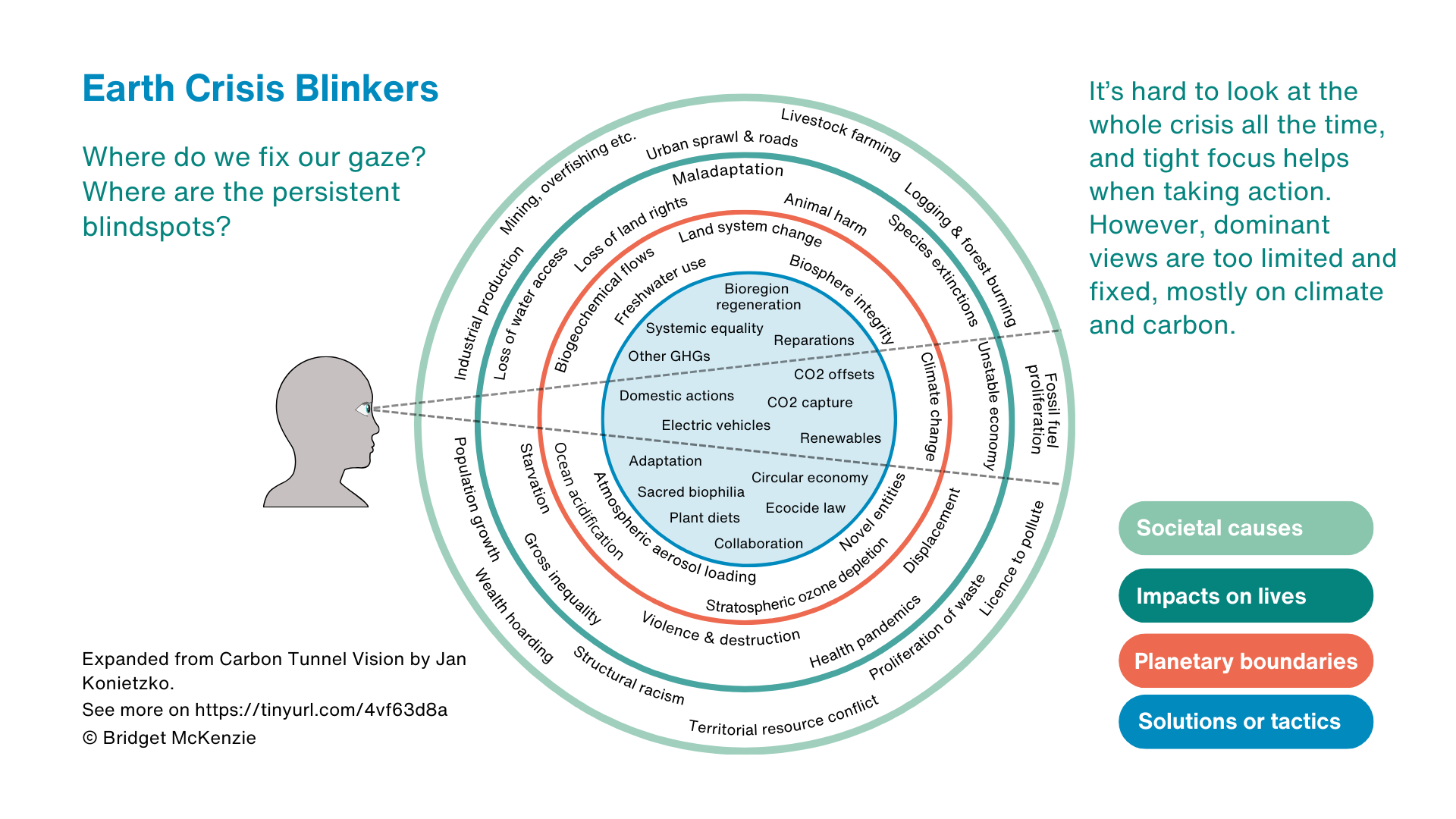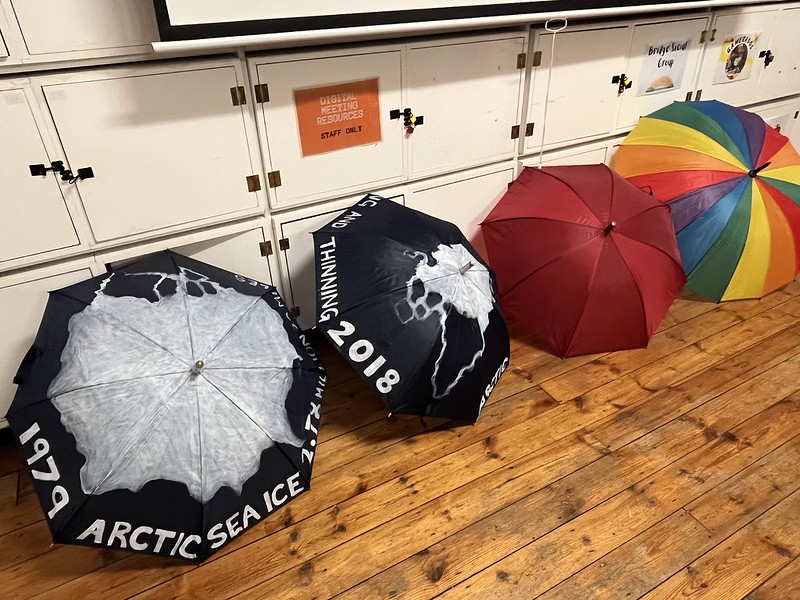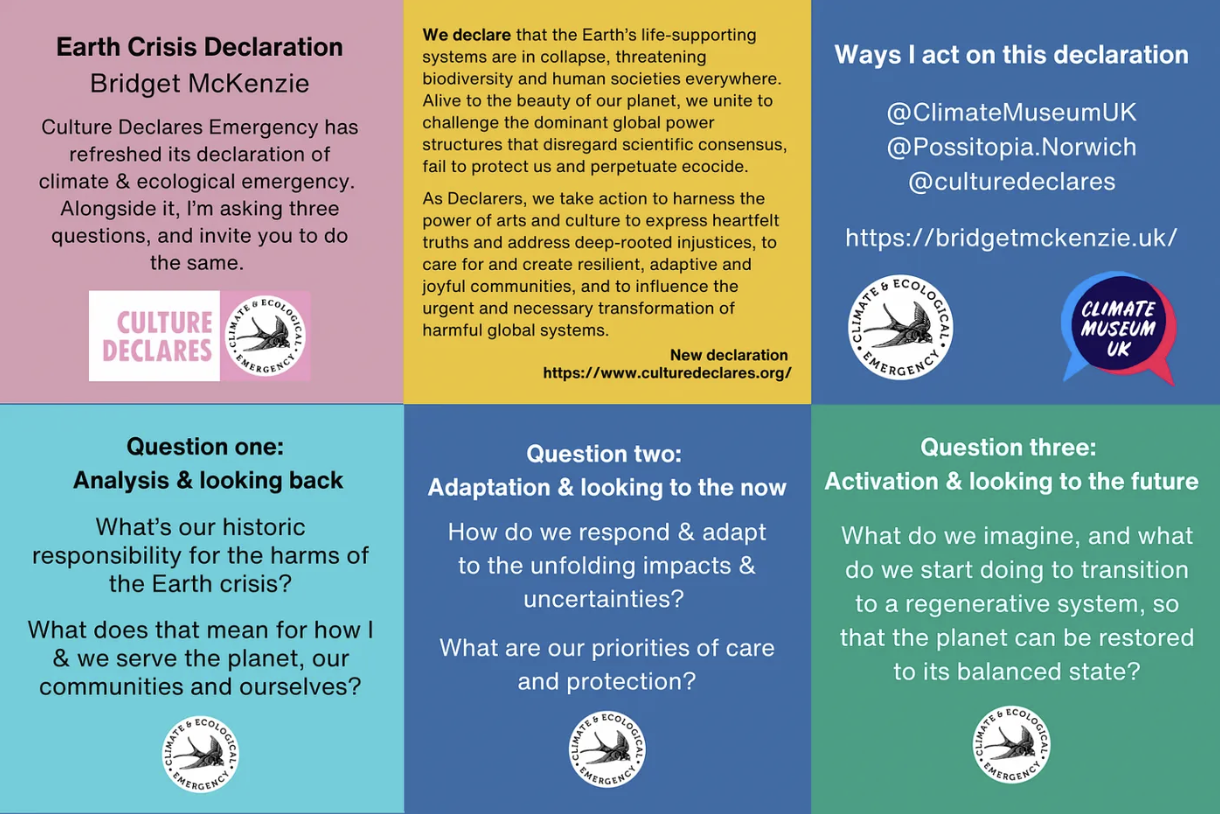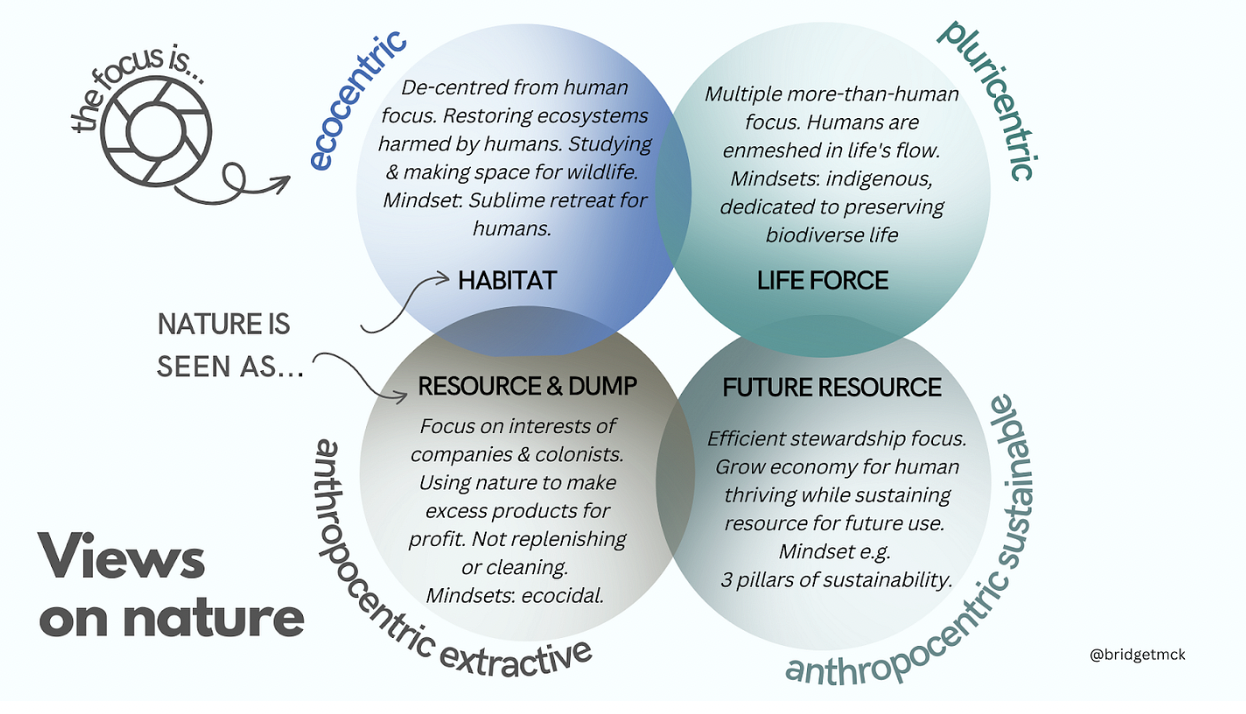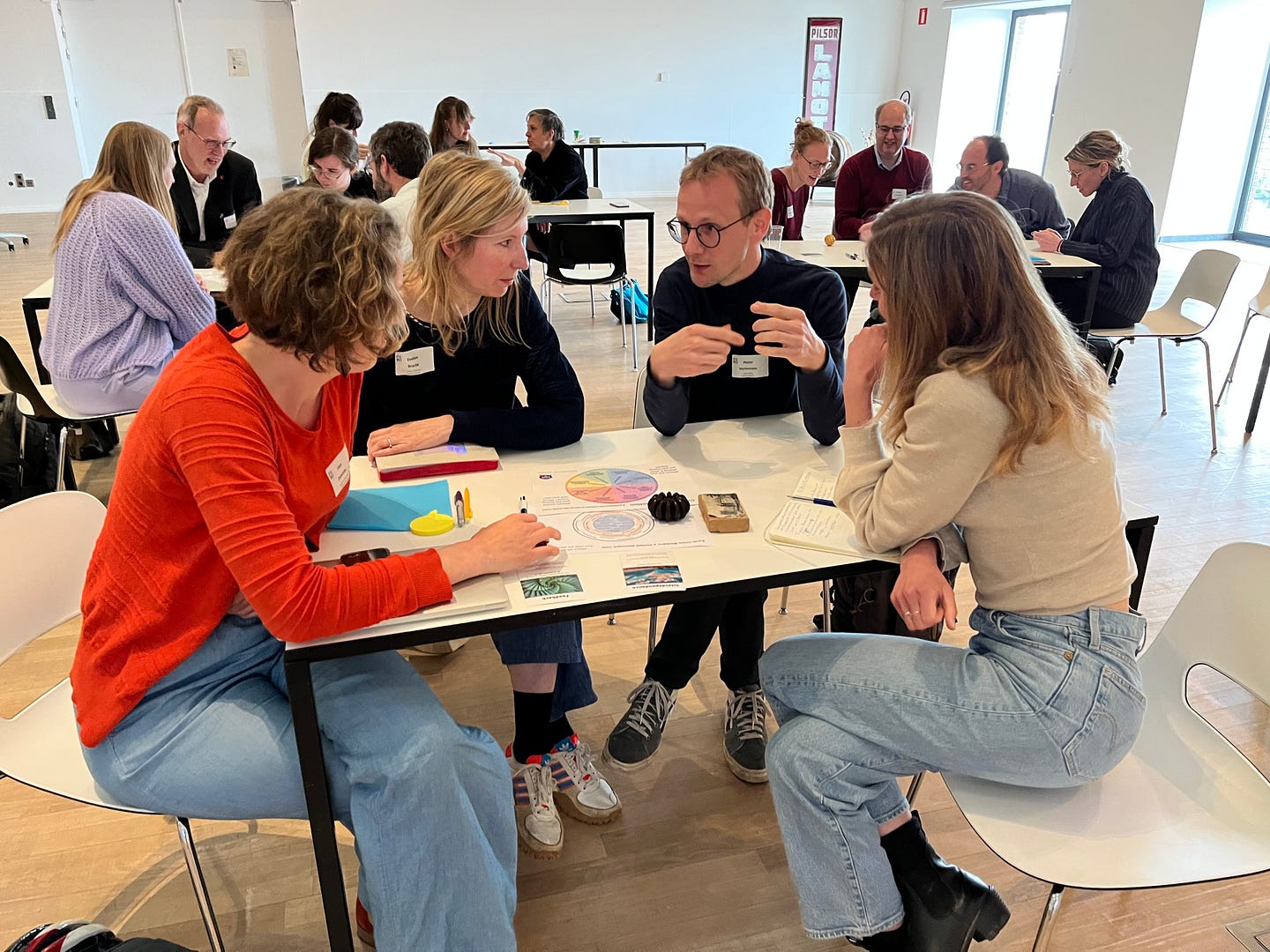
I’ve been using my Earth Crisis Blinkers tool a lot in training sessions, and seeing it spread online too. The feedback is that it’s helpful but also a little complicated. So, I’ve made some slides to help explain it, shared below.
Read my original post for background on why and how I created this tool in June 2022. In a nutshell, it is an expansion of Jan Konietzko’s Carbon Tunnel Vision idea, showing someone ignoring other systemic factors looking only at carbon and climate. I intended to more clearly categorise the blinkered factors into three zones and to integrate the Planetary Boundaries into the model. Since then, I’ve added an outer ring to list some of the causes of the Earth crisis (adding to its complication!)
The explanation
The first slide shows the whole model and explains that it is difficult to look at this vast, complex crisis with full attention. It is exhausting to take in everything, to continuously think about how everything connects. An expanded focus can also lead to distraction or ‘spinning your wheels’ when you need to be acting in a place or caring for others. The problem is that dominant media, education and culture play into our human need and a social tendency to minimise and localise. They don’t play their vital role in pulling our focus outwards and reminding us of the bigger systems. In turn, this need for limited and simple messages gets played by those with stronger voices or greater resources. In the environmental world, those are the commercial and technological sectors, including fossil fuel industries as they green and greenwash their activities. Dominant views become too limited and fixated — mainly on climate change and CO2. I don’t mean to suggest that tackling climate change isn’t the primary urgent task facing humanity. The problem is that with a tight focus and a rush towards technical solutions, tactics can fail, history is forgotten, groups of people and species are excluded, and so on. Paradoxically, it can stop us from understanding climate change because we don’t see it fully as a threat multiplier of other social and environmental issues. The dominant narratives also focus on personal responsibility and domestic actions, which generates shame, blame and apathy.

The next slide shows that there are other common blinkers. For example, some people focus heavily on population growth, seeing overpopulation as the major and neglected cause of the Earth crisis. In reaction to this, other groups take different stances. One is that overpopulation is less significant than the unequal distribution of resources and the extraction of fossil fuels. Another stance is the argument that the population is declining—expressed by those looking narrowly at favoured nations, and not considering how future Earth crisis impacts will reduce the global population.

The outer ring of the (revised) Earth Crisis Blinkers diagram shows some of the social, economic and systemic causes of the Earth crisis. Some people focus in on limiting or stopping particular causes. For example, when people are taking direct action to stop harm from a particular activity such as plastic waste, they might be more aware than most people of the wider Earth crisis, but can become highly dedicated to or protective of their specific cause. Dominant cultures in media and education do not help us learn enough about these causes, how they intersect and how these harmful activities are exerted through mechanisms of power and structural racism. Some causes are consistently omitted from critique because they prop up the system that most livelihoods depend upon. This limits our imaginations about the changes that are possible.
(Note that the arrows in the diagram indicate the notion of interconnection, not exactly representing where connections lie.)
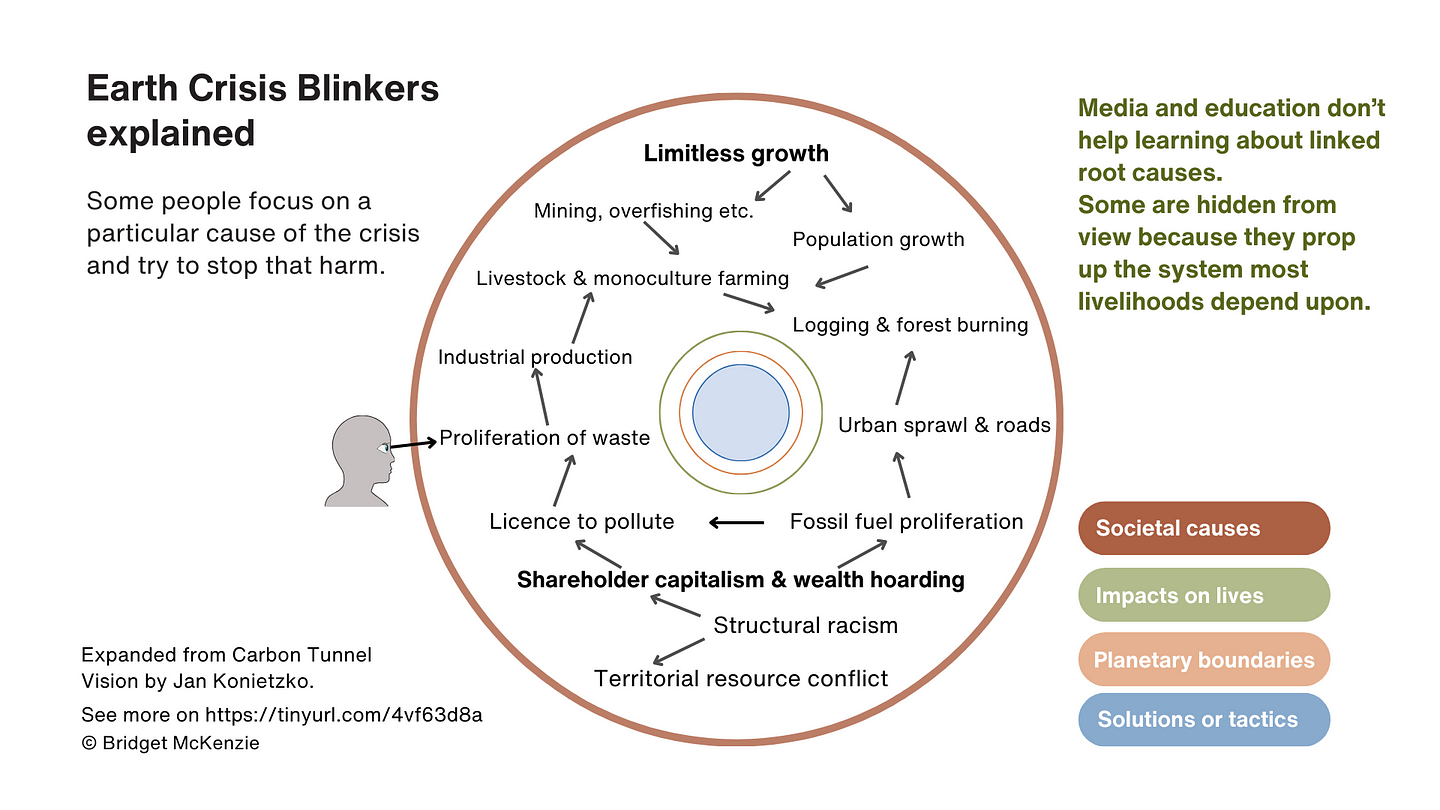
The next slide shows Impacts on Lives in more detail. The dominant culture does not support and extend empathy for people with lived experiences of various aspects of the Earth crisis, especially in the Global South. In addition, it generates a lack of empathy and recognition for other species of life. (See our Extreme Weather Stories and Everyday Ecocide projects that aim to expand awareness of these experiences and combat eco-blindness.)

The next image shows the Planetary Boundaries in diagrammatic form, reflecting the latest assessment in late 2023. Where the previous circle draws attention to Impacts on Lives, the Planetary Boundaries are more about the impacts on Earth systems and their resilient ability to maintain homeostasis. The large amounts of orange show how significantly six of the nine boundaries are breached, meaning these systems cannot heal or stabilise without urgent and large-scale intervention. See my piece on Economics Past Earth’s Limits, asking what it means to meet people’s needs within the planet’s limits when they are already in overshoot.

Next up, an explanation of the central zone, filled with blue to suggest the need for blue-sky thinking. We must practice being Possitopian, opening our imaginations to many more possibilities. The dominant culture generates enthusiasm for certain technical fixes, some of which are the equivalent of not-yet-developed medicines designed to tackle symptoms not causes. We need more pluralistic and imaginative learning for a range of tactics for human survival and ecosystem healing, informed by recognition that the crisis will worsen.
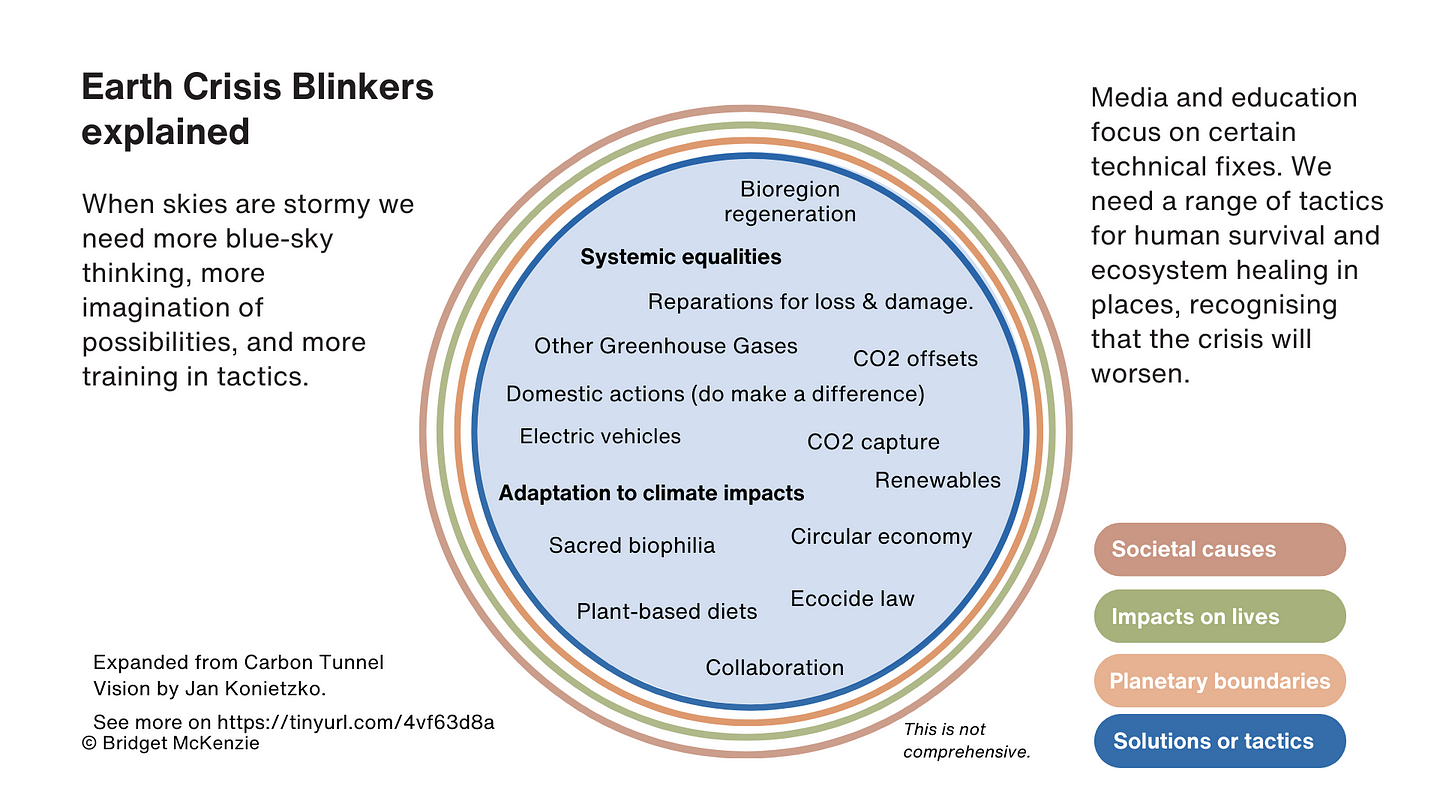
Finally, and introducing another model here, I am pointing to ways we can deal with the overwhelm of the Earth crisis. (In my work in Climate Museum UK, I try to conclude with ‘activation’ to help people leave knowing what they can do.) We can cope more easily if we know what action is within our capacities, if we see others doing these actions too, if we feel that they make a difference and that our actions can grow and lead to changing harmful systems. Find out more about the People Take Action approach here.
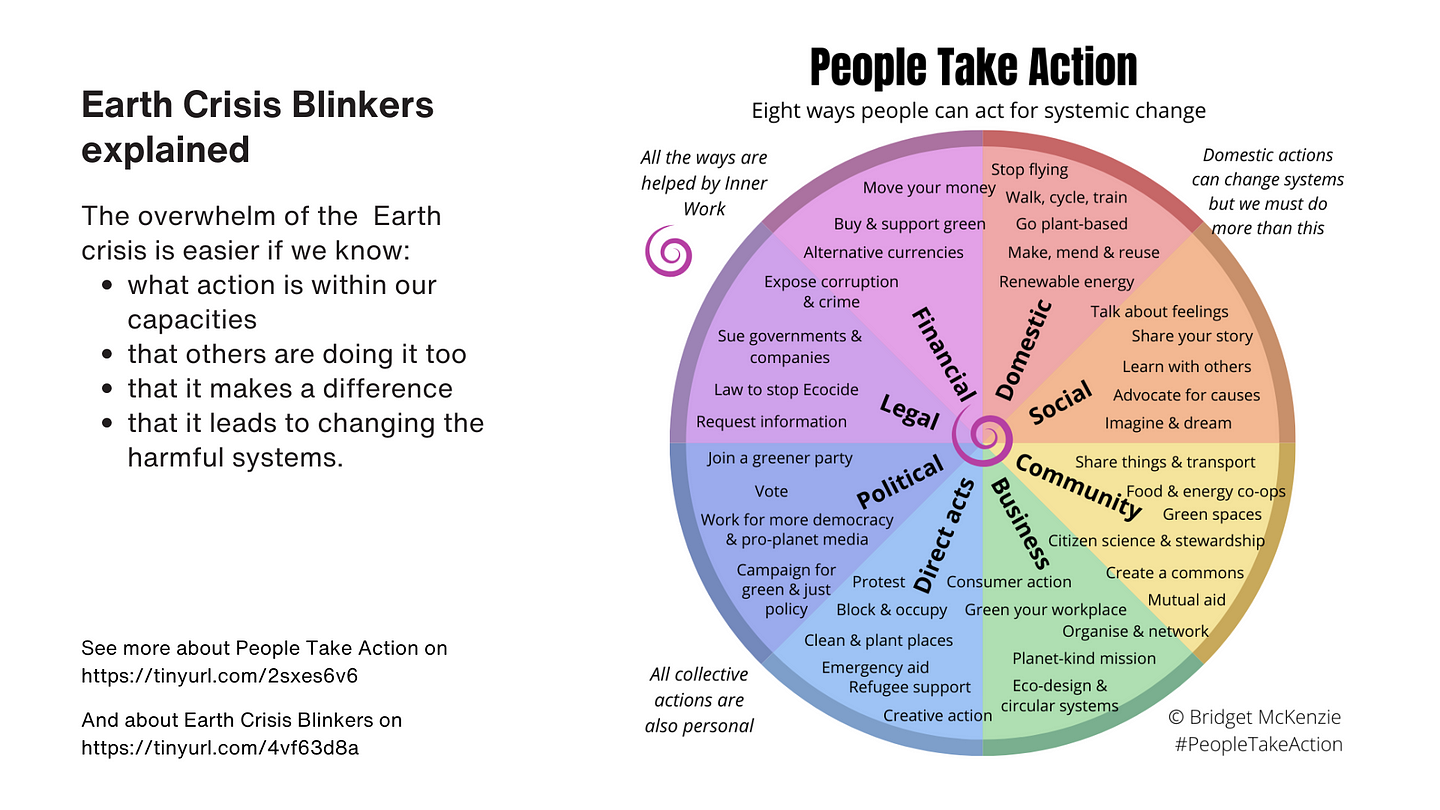
I suggest that in the Earth crisis, there is a greater need for us to practice zooming outwards to see the big picture and to zoom into focused topics and areas of action. Our practices of zooming out to see big pictures should encompass geophysical realities and diverse details, be informed by ethics, and not become too abstract. Above all, when we zoom in, we should not become too fixated and narrow.
A quick note on my use of the generic ‘we’, when talking about the education and practices we need to develop. I am referring to those of us influenced by the dominant culture and messaging this post is about. This dominant culture is spreading globally, but is strongest in the countries that benefit most from the harmful causes of the Earth crisis.
If you use and share this tool please link to this post, and let me know how you are using it.
